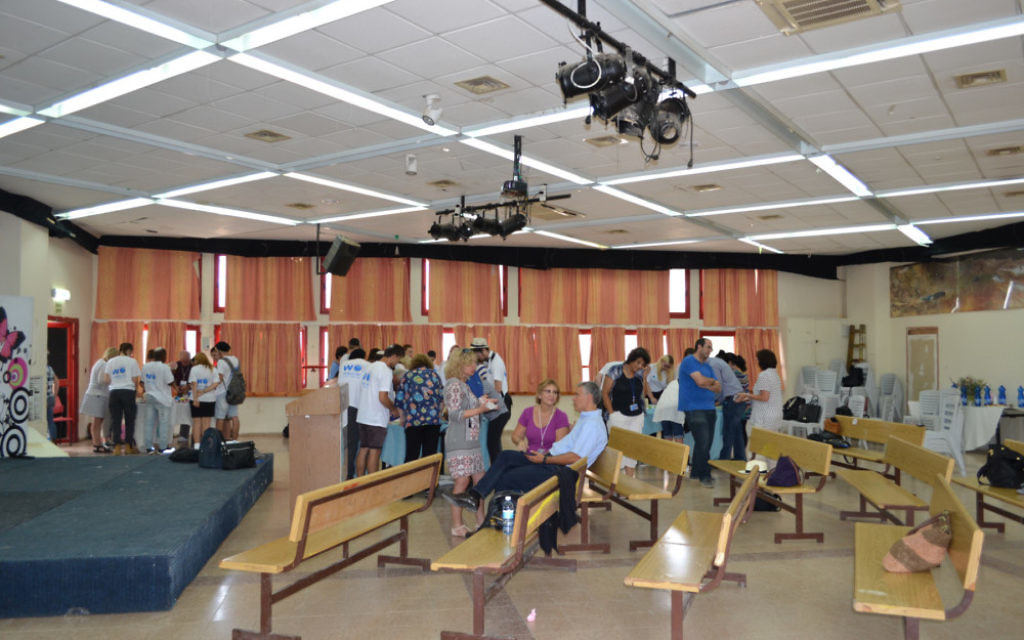ORT Reclaims Past to Revive Its Future
When Marty Greenberg was hired as CEO of ORT America a year ago, he knew it was a turnaround job. The educational organization born as a way to lift Jews out of Russian poverty in the 19th century had lost it name recognition in the 21st century.
Sixty years ago, Greenberg said, if you stopped 100 Jews on the street, all of them would have known what ORT was. Now, he said, 99 of them would have no idea.
“People don’t know us anymore. They don’t know ORT,” Greenberg said during a visit to Atlanta in mid-July. An honest assessment among staff and supporters concluded that ORT had fallen to the fourth tier of Jewish charities.
Get The AJT Newsletter by email and never miss our top stories Free Sign Up
Greenberg blamed changes in society and the simple passage of time for American Jews, most of whose ancestors arrived in the United States by 1920. “As you get further from the immigrant experience and you become more successful in America,” he said, “it’s harder to remember that people out there need to be pulled up by their bootstraps and need to get educated and taught how to work.”
So the organization launched a strategic plan dubbed “2 for 2 and 42”: In two years, by Jan. 1, 2018, ORT America aims to move up two levels to the second tier, along with educational operations such as the Weizmann Institute and Friends of Ben-Gurion University, and to increase its annual fundraising by 42 percent, from $7 million to $10 million.
The interim goal for 2016 is to increase fundraising $1 million by shifting targets from social ORT members — the kind who used to pay $36 to be part of the organization — to major donors. The strategy seems to be working, Greenberg said. “I’m confident, optimistic, that we’re going to reach it, and we want Atlanta to be part of it.”
The immediate way ORT’s Atlanta chapter has become a part of it is through the extensive modernization of the Hodayot youth village in the Galilee. Donors such as Hilly Panovka and the family of the late Joe Cohen, who was a national ORT president, have contributed to the overhaul of the dining hall, the student lounge and the science lab to make those facilities the envy of students anywhere.
Greenberg said that not only didn’t he have anything like the new Hodayot lab, unveiled this summer, but neither did his children when they attended Jewish day schools.
He said one of Hodayot’s high school students couldn’t stop laughing and crying out of disbelief when she first saw the renovated lab. “There it was,” Greenberg said, “what the work is all about.”
The school auditorium, at a cost of about $100,000, is next on the renovation list, but the work at the school is unlikely to end. Greenberg said it’s like fixing up your home: As soon as you put in new carpet, you realize you have to get new furniture.
Atlanta’s relationship with Hodayot is setting a standard for ORT, Greenberg said. ORT America’s Israeli affiliate, Kadima Mada, is taking over a run-down youth village in Israel, and the Detroit chapter is adopting it for renovations along the same model of cooperation.
“Atlanta should be very proud,” Greenberg said about Hodayot. “I believe the day will come when people will visit and it will be gorgeous and we’ll have to remind them how it used to be.”
While ORT is looking toward a brighter future for its Israeli programs and its American fundraising, it’s also holding on to an important part of its Russian past.
ORT began in 1880 in St. Petersburg, and the organization still provides Jewish learning and science, technology, engineering and math education at 16 Russian schools. But those ORT STEM programs get no government funding, and the private money is running out.
So ORT has launched a campaign to finance the 450 students at its original St. Petersburg facility, the Gunzburg School. It costs $550 a year for each student; ORT is seeking donors of $1,100 to cover two years and secure the future of the program. Greenberg hopes Atlantans will be part of that half-million-dollar campaign.
If all goes according to plan, ORT America will have a big mission to Russia when school opens in 2017 to celebrate its success and the extension of a 135-year commitment to the education of Russian Jews.






comments